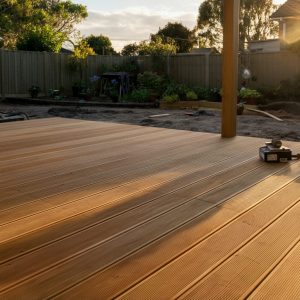
Building a deck is an exciting project that can add both value and enjoyment to your home. However, before you swing a hammer or lay the first board, it’s important to understand the deck codes that regulate construction. These codes ensure that your deck is safe, durable, and compliant with local regulations. Ignoring them could lead to costly penalties—or, worse, a structure that’s unsafe for use.
Here are essential deck codes you need to know and why hiring professionals, like the experienced team at Miles Bradley, is crucial for a smooth and successful deck installation.
Decks are often elevated or attached to homes, so safety is critical. Deck codes are established to minimize risks such as structural failure, fire hazards, or accidents. These codes typically address elements like frame strength, railing requirements, load capacities, and proper material usage. Deck codes protect both property owners and users, ensuring the structure is built to stand the test of time.
Failing to comply with these codes can lead to:
By understanding the rules upfront, you save yourself from financial headaches and potential safety risks down the line.
Before you dive head first into deck construction, you need to be aware of the deck codes that are relevant to your deck building. Here are important deck codes you need to know:
Before you start your deck installation, obtain the necessary building permits from your local municipality. Permits ensure that your project complies with local zoning laws and safety regulations. Skipping this step could lead to fines and, in some cases, having your deck torn down.
Deck footings are the foundation of your structure. To ensure stability, deck codes specify the depth and size of footings based on factors such as soil type and climate.
Every deck must support a minimum amount of weight safely. The two categories of load capacity are Live Load (temporary weight) and Dead Load (permanent weight). Failure to account for load capacities can lead to structural failure, especially during social gatherings or extreme weather conditions.
The materials you select for your deck should meet specific code requirements. For example:
Using substandard materials not only violates building codes but also decreases the lifespan of your deck.
While DIYing your new deck may sound like fun, the deck codes above are just the surface. In addition to other standard codes surrounding railings and stairs, there are state and local decking codes that need to be followed as well. This is where Miles Bradley comes in!
Miles Bradley is a full-service design and build custom deck and sunroom firm serving all of Michigan and Illinois including the entire Chicago Land area. In addition to being professional deckers who know all local and state decking codes, they have built their nationwide reputation on being an expert in low-maintenance decking and building products. If you looking for a new deck installation, contact Miles Bradley and see what we can do for you!
Posted In: Deck Installation
Tags: deck codes, deck installation, deck regulations